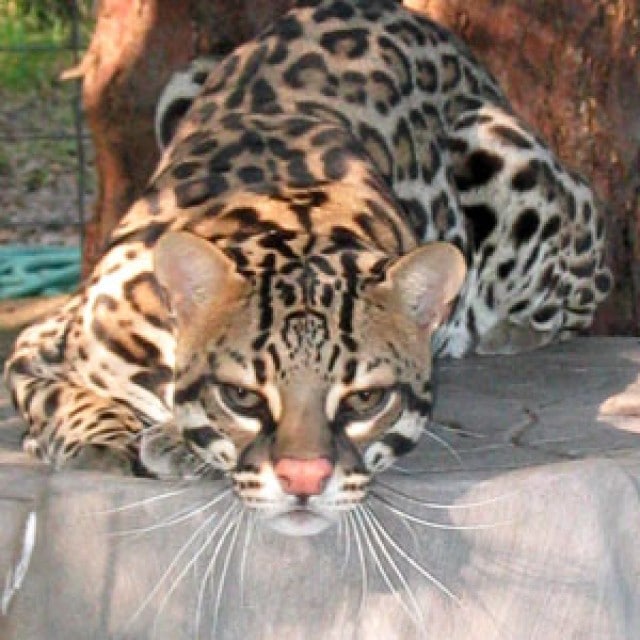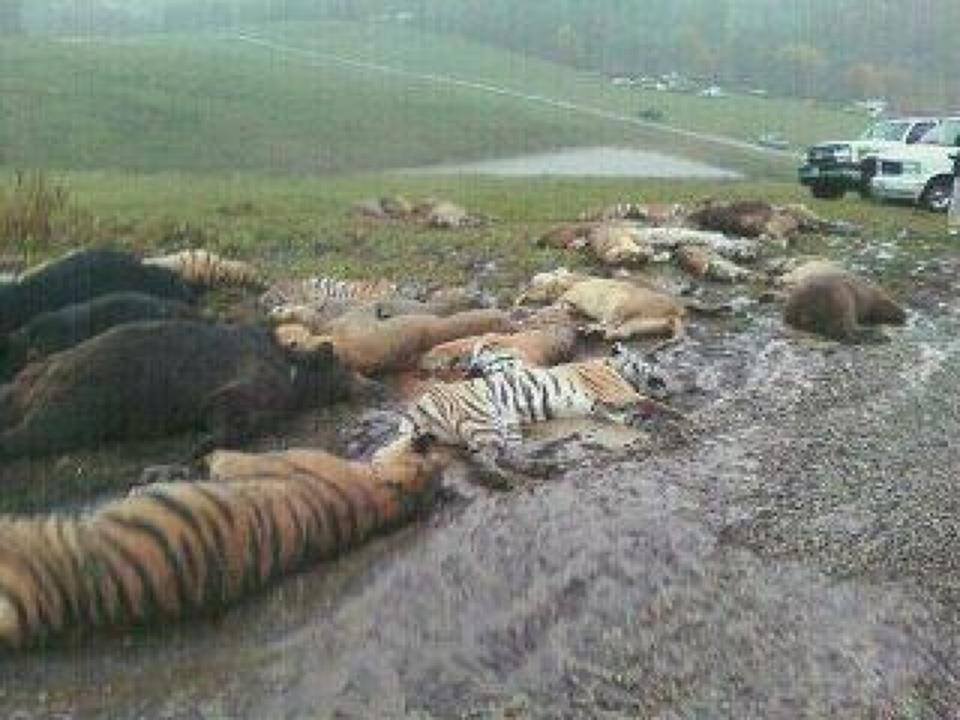Why do people keep dead exotic cats in their freezers?
Frozen panther found in Loxahatchee home baffles law enforcement
One dead panther was buried in a garage freezer. Another was stuffed and mounted on a wall.
The Oct. 16 discovery baffled law enforcement officers who were called to the 30-acre property in Loxahatchee that morning over a landlord-tenant dispute, according to the Palm Beach County Sheriff’s Offices.

The deputy who answered that call found himself staring into the eyes of a frozen panther that reportedly had been shot. At first, he thought it was a lion. Then a tiger. Officers later realized that the animal — buried under a pile of mangoes and two frozen birds — was a panther.
Gene Stimmler, 73, told authorities he didn’t know how his pet panther died, but that he was saving its carcass to make a rug. A former employee and tenant of his, who originally called authorities, said Stimmler shot it.
How the panthers died remains a mystery, yet one that state wildlife officials said they are not investigating. The Florida Fish and Wildlife Conservation Commission does not investigate the deaths of non-native captive wildlife, a spokeswoman said.
It’s unclear if the panthers, part of the cougar family, were endangered Florida panthers or a similar species that is less regulated. Stimmler has no current state permit to own a cougar as a pet.
In the past, he had a state permit for two pet cougars. He told investigators the frozen cat died about nine months ago and the stuffed one died long before.
In a telephone interview Tuesday, Stimmler said he’s owned about nine panthers over the years, and all were purchased legally. He said they probably were Florida panthers, but would not say where he bought them.
The Florida panther is a federally protected endangered species that cannot be sold or owned as a pet, according to the U.S. Fish & Wildlife Service. Only 100 to 160 adults are believed to exist in the wild, mostly in South Florida.
The agency was unable to provide information about the Loxahatchee case Tuesday.
For his part, Stimmler defended his actions, calling the incident “ridiculous.”
“This has been hell,” he said. “I’ve had my name dragged through the mud.”
Stimmler’s property on D Road has been home to a menagerie of exotic animals, including lemurs, a monkey and dozens of exotic birds. He runs a landscaping company and plant nursery from his home.
It was a disgruntled former employee who last month tipped off police about the dead cat, according to the Sheriff’s Office report.
Joseph Valenzuela, 48, who lived in a trailer on Stimmler’s property, said he had been working for Stimmler for several weeks and was owed more than $600, the report said. Stimmler denied hiring Valenzuela to do any work for him.
The deputy arrived and advised Valenzuela to find a lawyer to dispute the owed wages, the report said. Before the deputy left, Valenzuela showed him the freezer where the dead panther was buried.
It was frozen “in a live state, eyes open,” the deputy wrote in an incident report.
He called state wildlife officers and county animal control.
Wildlife investigators photographed the dead panther. Stimmler denied having shot it.
But because there were no obvious signs of abuse, the officer did not check to see if the cougar was shot, FWC spokeswoman Katie Purcell said. The follow-up inspection at Stimmler’s home was completed last week, with no major violations reported.
Valenzuela, who has since moved off Stimmler’s property, said Stimmler often drowned unwanted pets and trapped animals from the wild. He said the cougar was missing one day and Stimmler said he had someone shoot it because it bit him in the leg.
“I know he was lying because there’s no bite mark,” Valenzuela said Tuesday. “I have no idea why he shot it.”
In May 2010, state wildlife inspectors warned Stimmler that his panther looked thin and that its water was dirty. That panther was kept in a chain-link cage outside his home. The animal looked ill, but not because of old age. It appeared to be 3 to 4 years old, the inspector wrote in the report.
“The panther’s hip bones were showing, indicating poor diet or parasites,” the FWC inspector wrote.
Cages for his lemurs and a marmoset monkey were too small, and his captive-wildlife permit had expired, the report said. Stimmler was given a warning to fix the problems and he promised he would.
But the Fish and Wildlife Conservation Commission did not follow up in the following months to ensure the changes were made. The agency only is required to inspect the homes of captive wildlife owners every two years, Purcell said.
Staff writer David Fleshler and staff researcher Barbara Hijek contributed to this report.
apcampbell@tribune.com or 561-243-6609
https://www.orlandosentinel.com/news/local/fl-loxahatchee-freezer-panther-20111108,0,568119.story
Why do so many abusers keep big cats in their freezers?
Tiger Rescue Colton, CA (2002 10 tigers were seized and in 2003 13 young tigers were confiscated and 58 cubs found in the freezer) You gotta wonder, “Why?” https://www.savethetigers.com/
When Joe Schreibvogel was found to have had 23 tiger cubs die in 2010, you have to ask yourself, “How did the USDA figure that out?” Unless there were cubs in the freezer there isn’t any reporting that would have revealed that and to our knowledge there was no employee or volunteer who turned him in. Since it is still an open investigation (we checked Nov 2011) we don’t have all the facts, but I am betting that there were cubs in the freezer.
https://911animalabuse.com/gw-exotics-animal-foundation/
When “Wild Bill” in Homasassa, FL died his wife was later found to have a tiger in her freezer. She said she was cutting them up and feeding them to her living tigers, who were then confiscated, but why did she have tigers in the freezer to begin with? Tigers run 300-500 lbs and take up a lot of space so it would be very expensive to keep them frozen unless they were being kept for some lucrative purpose.
When a man in NY was found to have been chaining his wife to a wall and abusing big cats in his basement the authorities found dead exotic cats in the freezer.
Pat and Robert Engessor of The Zoo were cited for a dead tiger cub was found in the freezer, having died of an unknown (“probably infectious”) respiratory illness.
When a cat dies at Big Cat Rescue we do a necropsy to find out why and the cat may be kept in a hospital freezer briefly until we have the cat cremated by a company called Honor Thy Pet, but it cannot be kept in the food freezers (USDA regs) and usually isn’t kept on site for more than a few days or weeks at most. Most other facilities do not do necropsy reports (autopsy) and they just claim to bury their dead as cremation for a 500lb cat is really expensive, so why do they have big cats in their freezers?
A six year USFWS investigation called Operation Snow Plow revealed that these privately owned big cats were ending up in slaughterhouses and being killed for their parts. Most of the people who were caught in that investigation are right back in business.





